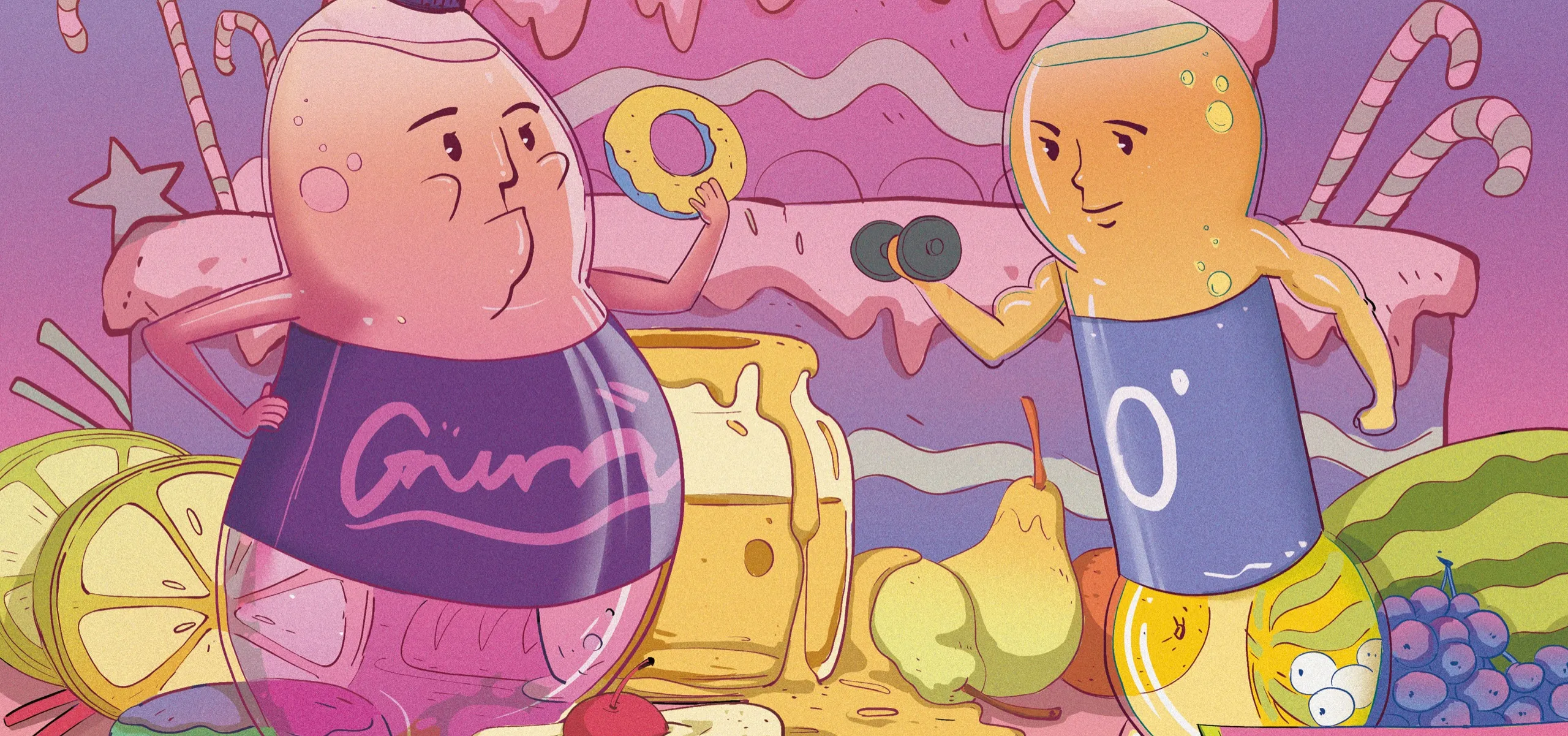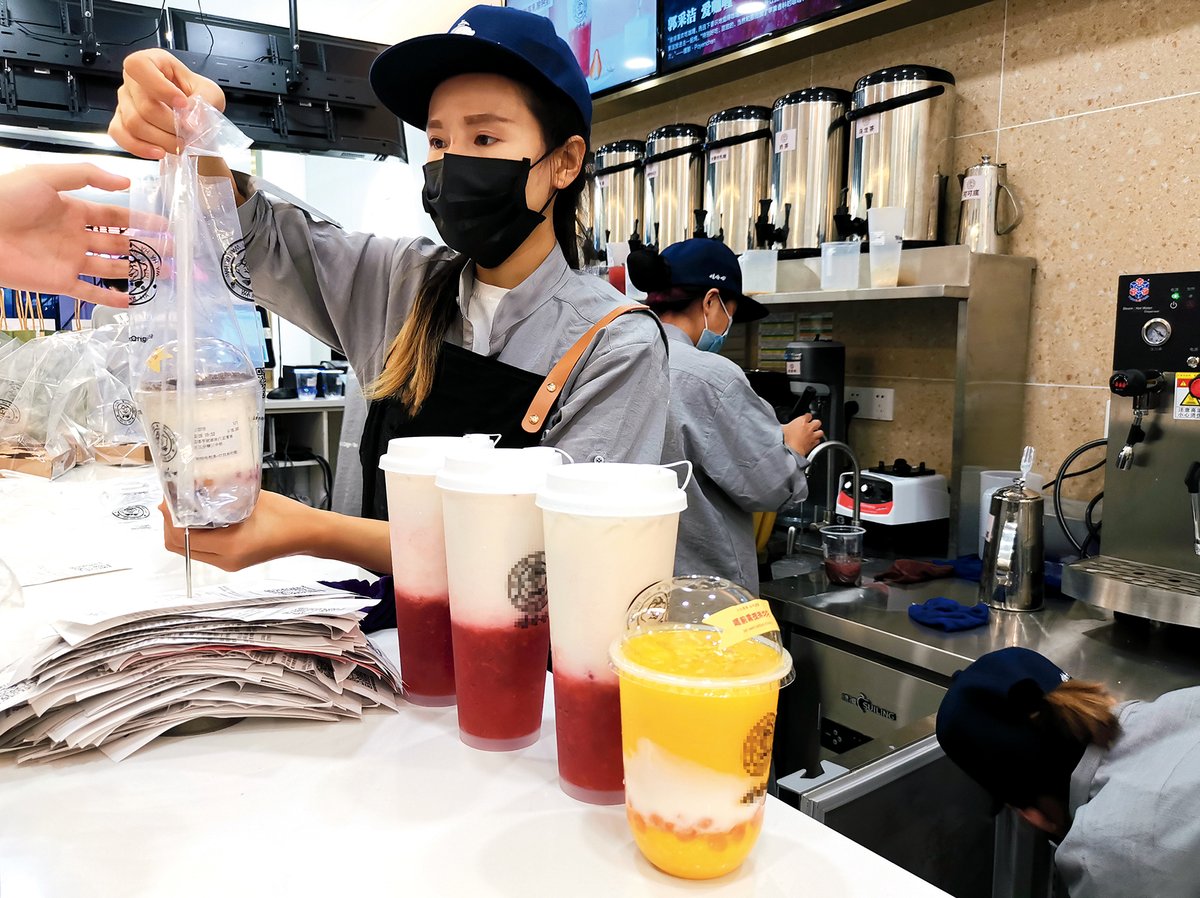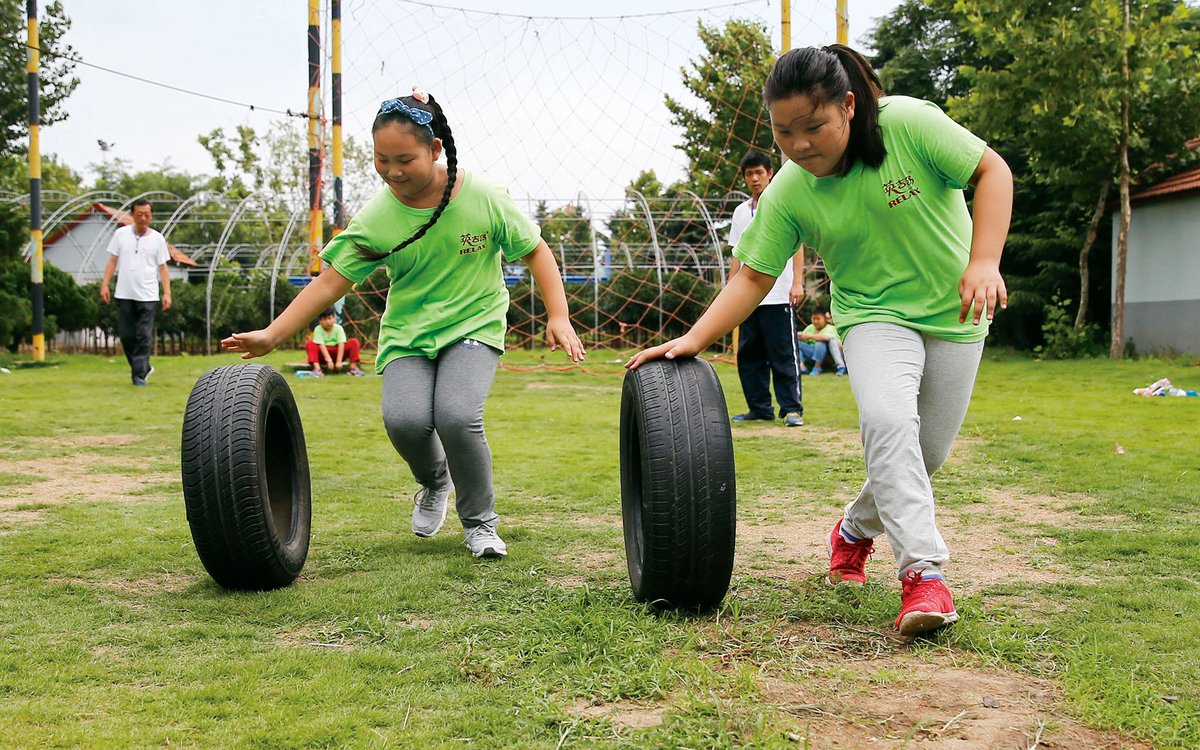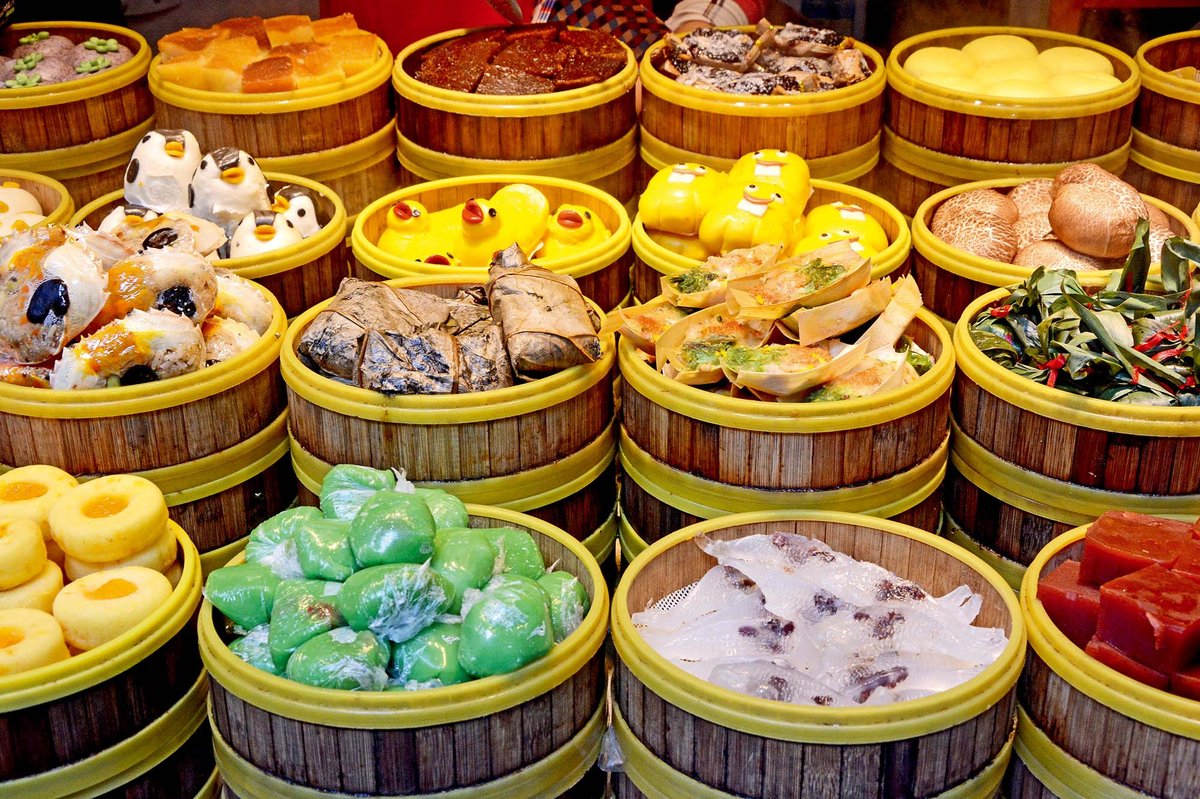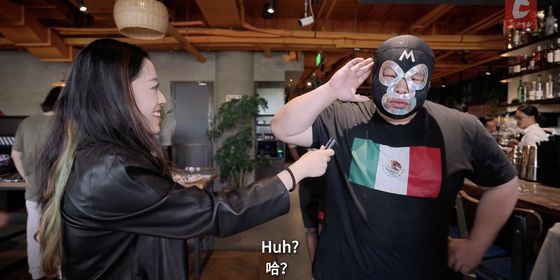Sugar consumption has boomed in China in recent decades, but health-conscious youngsters and sugar-free products are hoping to reverse the trend
When Lin Yin, a 27-year-old livestreamer from Xiamen, Fujian province, was unexpectedly diagnosed with Type 2 diabetes last September, she acted quickly. Shocked that she had contracted the illness so young, Lin announced on the very next day to her more than 500 followers on social media platform Xiaohongshu (RED) that she was quitting sugar.
With blood test results that showed both her fasting blood sugar level and glucose tolerance were more than double the normal range for someone her age, Lin decided to cut out cookies, soda, and milk tea, plus local delicacies like stewed pork with sweet sauce and pig’s feet with rice. “After one month, my fasting blood sugar level dropped to 5.4 millimoles per liter, within the normal range…my weight fell by 13 kilograms…even the doctor was amazed,” Lin boasted on social media last November regarding her new health regimen, which also included not eating processed and salty foods, and exercising two hours a day.
China’s per capita sugar consumption has rocketed over the last three decades, but now increasing awareness of sugar’s detrimental health impacts has seen a growing number of young Chinese wage “war” against the sweet stuff. This is enthusiastically supported by influencers and a booming market for sugar-free products, which was valued at 11.7 billion yuan in 2020 according to a report issued by the Chinese Academy of Sciences (CAS) last November.
But while Lin has made a success of her sugar-free diet, others continue to wrestle between their sweet tooth and their desire for health. Elsewhere, “low sugar” products, featuring reduced sugar content or sweeteners (also known as sugar substitutes), see their own problems with unsatisfactory taste, high cost, and health concerns of their own.
Among young Chinese, sugar is now considered the number-one enemy to those looking to lose weight and get healthy. On Xiaohongshu, an app popular with users mostly between 18 and 34, searches for phrases such as “quitting sugar (戒糖),” “sugar control (控糖),” and “sugar reduction (减糖),” show tens to hundreds of thousands of results. On social media platform Douban, also popular among the under-35 population, forums for users wanting to quit sugar can host thousands of members. One, the “Quit Sugar Commune” established in July 2018, has over 5,000 members who “check in” each day to record their low-sugar milestones and progress toward health goals.
Celebrities have also taken up the craze. In April 2018, 36-year-old Chinese singer and actress Zhang Shaohan told her over 15 million followers on Weibo that her “secret” to staying young is a zero-sugar diet: “Highly processed sugar…is probably one of the most harmful inventions in human history,” she wrote, earning 190,000 likes and 50,000 forwards on the platform.
Beyond health and beauty-obsessed youngsters, sugar consumption has become a concern for the government as well. A 2008 survey found that Chinese people consumed 19.6 kilograms of sugar per capita, five times higher than they had just 30 years earlier (though still lower than the global average consumption at 21 kilograms). According to the “Healthy China Initiative (2019 – 2030)” launched by the National Health Commission (NHC) in July 2019, each Chinese person consumes an average of 30 grams of sugar daily.
High sugar intake is linked to a range of health conditions. Guidelines from the World Health Organization in 2015 highlighted the intake of “free sugars” as a risk: monosaccharides, such as glucose and fructose; disaccharides, such as sucrose or table sugar; and sugars naturally present in honey, syrups, fruit juices, and fruit juice concentrates. When added to food and drink, or consumed as a natural ingredient in sweet beverages, free sugars can lead to weight gain, tooth decay, and increased risk of associated noncommunicable diseases, including Type 2 diabetes and cardiovascular disease.
The WHO recommends countries reduce their population’s daily intake of free sugars to below 5 percent of their total calories, or 25 grams. This was an adjustment from its recommendation of “no more than 10 percent” in 2003. In China, the NHC has also announced a goal of getting consumers to cut down their sugar intake to below 25 grams as part of the “Healthy China Initiative,” as well as updating standards for labeling sugar content on food products and restricting the sale of high-sugar foods.
However, one’s sugar intake “is not easy to control [to below 25 grams], especially for beverage-lovers,” says Ruan Guangfeng, a nutritionist and researcher from China Food Information Center (CFIC), a Beijing-based non-profit organization specializing in food and nutrition-related technology and consultancy. Ruan explains to TWOC that a 500-milliliter portion of a soft drink like cola and milk tea is commonly 8 to 15 percent sugar, amounting to 40 to 75 grams. In a public event in June 2020, Ruan also warned of the high sugar content in Chinese dishes like braised pork in brown sauce (which can contain 25 to 30 grams of sugar per dish).
For 34-year-old sweet-tooth Tan Yan, sugar is a significant barrier to her goal of losing weight. Tan grew up in a village in Hengyang in central China’s Hunan province, but since settling down in Foshan, a city of 9.6 million people in south China’s Guangdong province, she has started buying fruits and snacks in bulk, as well as sugary milk teas and other desserts. “It’s to compensate for being deprived [of sweet treats] in my childhood,” she believes, describing how the most common snack at home had been pieces of sugar cubes made from fresh sugarcane.
“If you asked people to control their sugar intake 30 years ago, when getting enough to eat was still a concern, you would probably be scolded,” Ruan points out. “But now people eat too much.” Just prior to the reform period in 1978, when commodities were still rationed, the average Chinese person consumed only around two kilograms of sugar per year, mostly during holidays and festivals, Xinmin Weekly magazine reported in 2019.
The notion of sugar being a special treat has persisted in the following several decades. Tan recalls that whenever she lost her appetite due to illnesses in her childhood, her mother would sprinkle some white sugar on rice to tempt her to eat. In her hometown, there remains a tradition of welcoming visiting relatives, neighbors, and even strangers during the Spring Festival with a cup of boiled sugar water.
Awareness of the risks of excessive sugar consumption is rising, but so are the cases of related health conditions. A report jointly issued by the NHC and several other Chinese health authorities in December 2020 shows that 34.3 and 16.4 percent of Chinese over 18—that is to say, half of the adult population—were overweight or obese. For children aged 6 to 17, close to 20 percent were overweight or obese.
Meanwhile, the number of diabetes patients in the country increased by 56 percent between 2011 and 2021, from 90 million to 140 million. An estimated 72.8 million of these people may not know about their condition, according to the International Diabetes Federation, due to lack of knowledge about the illness or lack of resources for getting diagnosed.
Hu Rena, a postgraduate student from Beijing who asked to be known by a pseudonym, started her own “quitting sugar” group on Douban in March 2021, challenging herself to quit sugar in 30 days in order to lose weight and “look better and slimmer.” This is the second time she took on such a challenge, the first time in the summer of 2020, when she first learned about sugar control from a WeChat account.
Hu cut down her consumption of all sugary snacks, including her favorite yogurt, chocolate, Oreos, walnut loaf, chicken wings, milk tea, and fruit juice, replacing many of them with sugar-free versions. “I lost 7.5 kilograms from my original weight of 70 kilos after one month…and my acne cleared up,” Hu tells TWOC, claiming the results have given her more confidence, and motivated her to keep trying.
Ruan agrees that sugar substitutes are “the simplest and most effective way to cut down sugar intake…since they can provide people sweetness without bringing extra calories [as regular sugar does].” Cao Yanping, a food and health professor at the Beijing Technology and Business University, explains to TWOC that the calorie-free artificial sweetener sucralose, commonly used in beverages and bakery products, offers a sweetness 400 to 800 times stronger than sucrose per serving, with fewer calories.
Products that substitute sugar with sweeteners have surged in popularity recently. The sugar-free beverage industry, for instance, increased almost 10 times in value from 2014 to 2020, and is projected to more than double again to reach 22.74 billion yuan by 2025, according to the CAS report. Meanwhile, the NGO Shanghai Consumer Council noted in a survey of 100 consumers born after 1995 that over 80 percent preferred low-sugar versions of beverages (with 50 percent or less of normal sugar content), and more than 40 percent liked sugar-free drinks the best.
Companies have milked the trend: Genki Forest, a sugar-free beverage company established in 2016, sold over 5.6 million bottles of sugar-free sparkling water on the online shopping platform Tmall in a sales event on November 11, 2019. Christiana Zhu, founder of the Beijing-based yogurt brand Yeyo, which advertises as “zero dairy, zero added sugar, zero artificial colors or flavors,” tells TWOC that her business, which started in her own kitchen in 2016, now sells its products online nationwide and offline in nearly 200 retail stores mainly thanks to the sugar-free trend, though the concept was originally supposed to be a minor selling point of the product.
According to Zhu, Yeyo targets female health junkies or fashionistas aged 25 to 35 in first-tier cities and sells offline in Beijing and Shanghai. Though the yogurt does not contain sugar or sugar substitutes, it has been packaged with a separate sugar packet consisting mainly of natural sweeteners erythritol and stevia since it entered the mass market so people not “used to the taste of healthier food” can sweeten it, says Zhu.
But sugar-free products come at a cost, says Michael Wang, the founder of China’s first sugar-free ice cream brand Nice Cream. Established in 2018, Nice Cream uses natural sugar substitutes like erythritol (rather than artificial sweeteners like aspartame), but this is expensive, and it’s a part of the reason why Nice Cream products retail for up to 10 times the price of other ice creams. Wang estimates that Yuanqi Forest’s products also cost 70 to 80 percent more than Coca-Cola on average (including Zero Sugar Coca-Cola, which uses aspartame).
With sugar intake and related health education perhaps years behind the West, Wang reckons, Chinese consumers “willing to spend a premium on low-sugar or no-sugar soft drinks” are mainly from large, more developed cities. Like Yeyo, Nice Cream retails online nationwide, but is only available offline in high-end hotels and supermarkets in Beijing and Shanghai.
Companies still struggle to replicate the taste of sugar with substitutes, while sweeteners also come with their own health concerns: An article on the official website of the Shanghai Municipal Health Commission, for instance, warned last August about the risks of excessive consumption of sweeteners. It suggests that low-calorie sugar substitutes don’t satisfy the brain’s sense of hunger, leading people to eat more food, which in turn increases their risk of weight gain and diabetes.
Scandals in the industry and new research on the health risks of sugar substitutes have also soured consumers’ impressions. Last April, Yuanqi Forest apologized on its website for misleading customers by falsely labeling its milk tea beverage “zero sugar,” despite it containing crystalline fructose, in contravention of China’s legal standards. A paper in international medical journal PLOS Medicine this March concluded based on a decade-long study involving over 100,000 French adults that artificial sweeteners, especially aspartame and acesulfame-K, “were associated with increased cancer risk,” even though aspartame, which was recognized as safe by the US Food and Drug Administration in 1981, has been widely used worldwide since the 1980s.
A report from Chinese news outlet The Paper last November warned that consumers of sugar substitutes are 14 percent more likely to experience depression. It also noted that consumption of aspartame on an empty stomach may cause a blood sugar imbalance, and erythritol can lead to gastrointestinal troubles. Even Yeyo’s Zhu suggests that the sugar-free label may have simply become a marketing gimmick rather than a real push for healthy substitutes, sharing with TWOC that she has seen salty crackers, obviously not sweet, advertised as “sugar-free” on packaging.
Ruan has similar concerns, and believes that consumers truly seeking a healthy lifestyle need to make more comprehensive changes. “Many think that controlling sugar intake is about having sugar-free products, no matter how many. But in fact, it should be about controlling your whole diet, and the total daily intake of sugar, instead of focusing on one single meal or food item.” Cao points out that to eat healthily, one must use common sense about nutrition, and have a balance diet of carbohydrates, proteins, and other food groups, rather than relying on sugar-free products.
For Lin, living with diabetes and changing her lifestyle has been tough: “There is no joy in the process of sugar-control, especially at the beginning,” she says. “But once you’ve got it totally under control, you can have a little taste of the [sweet] foods you like; that’s when you get a sense of happiness.”
Bitter Sweets: Have Chinese Consumers Lost Their Taste for Sugar? is a story from our issue, “Lessons For Life.” To read the entire issue, become a subscriber and receive the full magazine.





